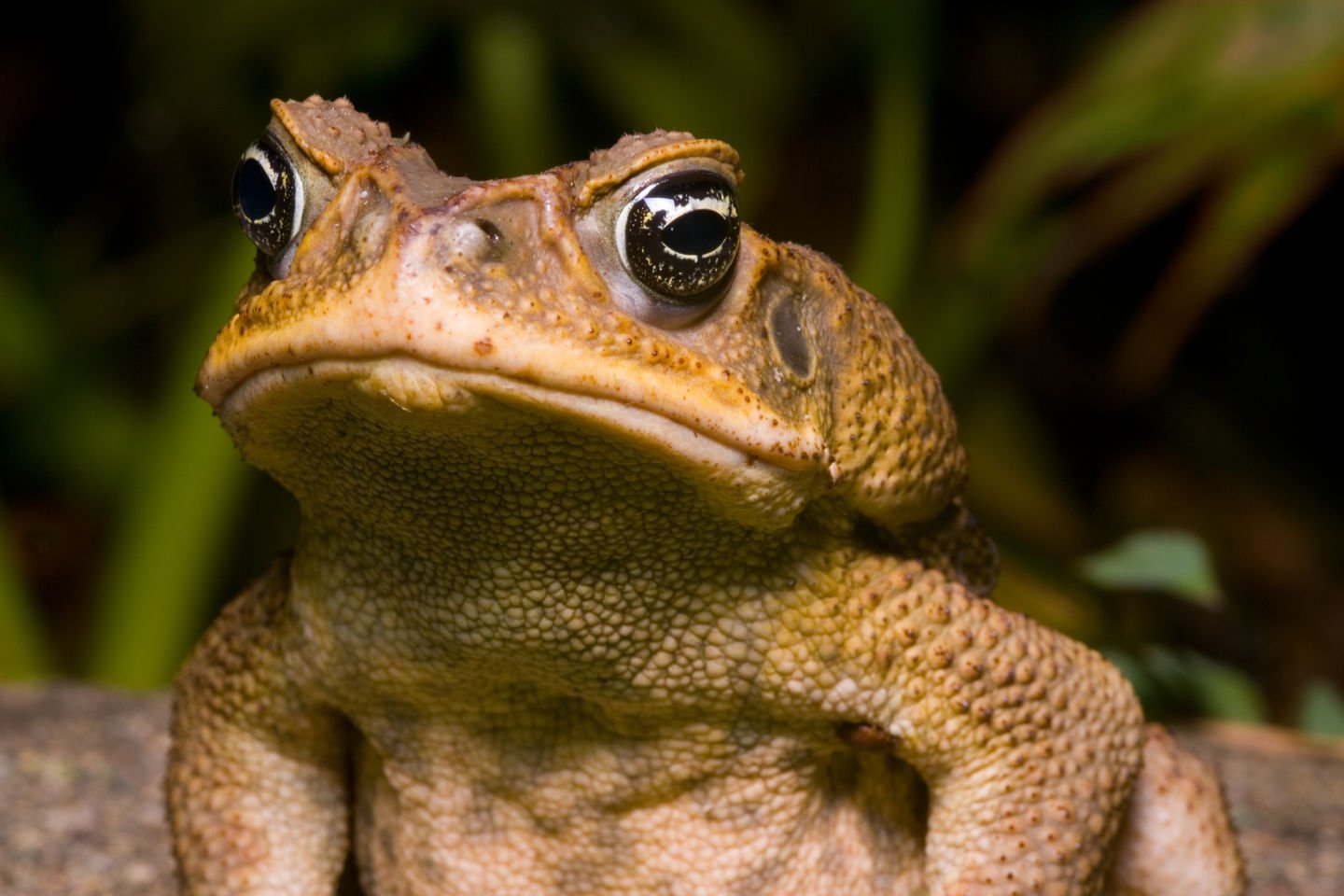Getting the jump on the cane toad invasion
An “all toads must die” approach to this pest could be replaced by military-style operation of containment.

What you can do to contain cane toads
Limit access to breeding places:
Fence waterbodies such as fish ponds and water fountains. Fencing should be at least 50cm high and have holes no larger than 1cm in diametre.
Plant dense, native groundcovers such as Lomandra around waterbodies. Cane toads prefer open, grassy areas.
Consider joining the Land for Wildlife program.
Limit access to food:
Remove pet food from outside areas once your pet has finished eating.
Dispose of kitchen scraps in a sealed bin or compost scraps in a sealed bin that limits the entry of cane toads.
Remove cane toads and their tadpoles:
You have probably heard of various ways of killing cane toads, from whacking them with a golf club to the more humane method of slowly freezing them to death.
Sadly, nothing seems to halt the toads’ relentless march across northern Australia. This invasive species, initially introduced into northern Queensland, has been found across eastern Australia, and are now only 150 kilometres away from Broome in Western Australia.
Each female cane toad can lay up to 70,000 eggs per year, so removing adults from the environment before they can breed has been an important focus of many eradication strategies.
In the Tweed River region of northern New South Wales, eradicating cane toads is being promoted as a healthy family affair.
One toad-busting group says, “Toad busting is a fun activity for the whole family and is a chance to get out in nature for a walk while helping to make a difference to rid the region of this pest.”
The group, Watergum, doesn’t mince words about its aim to kill all toads and save our wildlife: Australian native species are vulnerable to poisoning when they try to eat cane toads.
Dramatic drops in populations of quolls, freshwater crocodiles, goannas and monitor species have been well documented as cane toads move into new areas. Cane toads may also compete for habitat resources with species of native frogs.
Cane toads are also a threat to our domestic pets, with an adult toad producing enough poison to kill a medium-sized dog in 15 minutes. Thousands of cases of cane toad poisoning in dogs and cats occur every year.
Perhaps surprisingly, while recruiting toad buster volunteers for its Cane Toad Challenge, Watergum informs us, “Nature is gradually adapting to cane toads; native species are learning to safely eat these pests and will one day manage their numbers”.
The jury is out on how effective that approach is, and there are some doubts as a very unusual adaptation strategy has been played out in northwest Western Australia.
For the past five years, the Kimberley region has seen thousands of grey uncooked sausages raining down from helicopters or ground deployed.
The “wart wurst”, made from toad legs and laced with nausea-inducing chemicals, are supposed to teach native wildlife not to eat the amphibian before the main invasion wave reaches them.
There were high hopes the method could halt the devastation but with the toads closing in on the Pilbara region and its coastal town of Broome – after travelling 200 kilometres in the past five years – there are doubts about the aerial bombardment program.
One conservation group says the experiment has failed and wants to see toad-related management expenditure in the region directed towards other measures.
They point to an exercise where researchers gave baits to three quoll populations before the cane toads reached them. Quoll numbers in the control populations declined by 65% after the arrival of the toad.
Losses in the areas where baits where deployed were even higher, with populations declining by 94% – and the mammals were not toad-averse, despite training, after 120 days.
“Our result calls into question the value of this approach for conserving quoll populations, at least in its current form,” the researchers said.
If the toads get through to the Pilbara, it’s estimated that 10 to 15 animals could be added to the national threatened species list or have their threat level raised.
The toads would have access to 270,000 square kilometres – an area larger than Great Britain.
Scientists have been looking into the viability of a new strategy to combat the pest: a waterless barrier where a “toad containment zone” is established by upgrading cattle station infrastructure so water can still be accessed by livestock but not toads.
The zone would be about 100km-by-100km in area.
Resources are being marshalled as conversations about the novel approach moves towards implementation.
“There’s a coalition of landowners who are quite excited about this idea and keen to implement it,” a researcher said.
“There’s been conversations with industry and government that have been really productive. This is just one of those rare moments where there’s a potential win for everyone.”
Time is ticking on the proposal.
Related reading: Toad Busting, Moreton Bay Council, ABC





